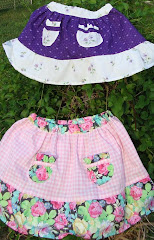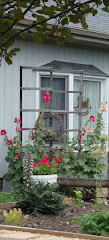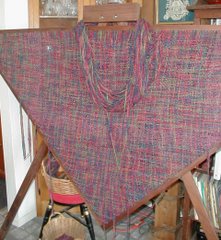 Over the last couple of years we've gone from regular store-bought white bread to grinding our own wheat berries and baking fresh bread several times each week. Having a good recipe for sandwich bread helps. It's even gotten to the point where I keep at least three types of wheat on hand; using hard red winter wheat or hard white wheat for breads and soft white wheat for pastry, biscuits, and cakes. But until last month when I stumbled across Jim Lahey's No-Knead Bread, I still couldn't make a crusty, holey loaf of rustic bread that was equivalent or better than a bakery-made loaf. (Loaf made with unbleached flour pictured in photo to left.)
Over the last couple of years we've gone from regular store-bought white bread to grinding our own wheat berries and baking fresh bread several times each week. Having a good recipe for sandwich bread helps. It's even gotten to the point where I keep at least three types of wheat on hand; using hard red winter wheat or hard white wheat for breads and soft white wheat for pastry, biscuits, and cakes. But until last month when I stumbled across Jim Lahey's No-Knead Bread, I still couldn't make a crusty, holey loaf of rustic bread that was equivalent or better than a bakery-made loaf. (Loaf made with unbleached flour pictured in photo to left.)All that's changed now. And almost better than the bread itself is the fact that it's incredibly easy to make.
 No kneading. Not a bit. The hardest part is getting the timing down as you need to start the process 15 to 21 hours ahead of when you want to take the loaf out of the oven. But that initial calculation is all the work there is -- you mix up the ingredients, cover and let sit on the counter for 12 to 18 hours, roll the dough out of the bowl and pretty much let it sit for another 2 hours, roll into the pre-heated pan and bake. That's it.
No kneading. Not a bit. The hardest part is getting the timing down as you need to start the process 15 to 21 hours ahead of when you want to take the loaf out of the oven. But that initial calculation is all the work there is -- you mix up the ingredients, cover and let sit on the counter for 12 to 18 hours, roll the dough out of the bowl and pretty much let it sit for another 2 hours, roll into the pre-heated pan and bake. That's it. The method works fairly well with fresh ground wheat, too. There are a few differences in the loaves -- the wholegrain bread won't rise as high, the crust won't be as shatteringly crunchy and the texture won't be quite as open. However, two improvements I find when using fresh ground wheat are that the bread stays fresher longer (doesn't dry out as fast) and the taste is improved. That last one is true for all wholegrain bread, I think.
Here's the recipe for my fresh ground wheat version (shown in photo above right). Check out the link above for the story of Lahey's method development or go straight here for his recipe for the loaf made with all-purpose or unbleached flour.
No-Knead Wholegrain Bread
3 cups fresh ground hard wheat flour, more for dusting
1/4 teaspoon Saf-instant yeast
1-1/4 teaspoons salt
Mix flour, yeast and salt together in a big bowl. Add 1-1/2 cups water. Stir until blended. Cover bowl with plastic wrap. Let bowl sit on countertop at room temperature. Surface of dough will be dotted with bubbles when it's ready for the next step -- allow at least 12 hours, preferably 18.
Lightly flour clean countertop or other work surface and place dough on it; sprinkle a little more flour over dough and fold it over on itself once or twice. Lay plastic wrap left from covering bowl over dough and let rest for 15 minutes.
Using just enough flour to keep dough from sticking to counter or fingers, gently and quickly shape dough into a ball. Generously coat a cotton towel (do not use a textured towel like terry) with extra flour. Place dough on towel and dust top of dough with more flour. Cover with another similar cotton towel and let rise about 2 hours.
Preheat oven to 450F. at least 30 minutes before dough is ready. Put a 6- to 8-quart heavy covered pot (cast iron, enamel, Pyrex or ceramic -- I used large Corning Ware dish shown in pictures above) in oven as it heats. When ready to transfer dough to pot, remove pan from oven, slide one hand under towel and flip dough over into pot. It will look messy. Shake pan bake and forth once or twice if dough is unevenly distributed. It will shape up as it bakes. Cover with lid and bake 30 minutes, then remove lid and bake another 15 minutes or until loaf is browned. Turn out onto a rack to cool.
For all kinds of kitchen tips including more recipes, check out Tammy's Recipes.com Kitchen Tip Tuesdays column. There's a discussion about grain mills going on, too, in case you're thinking about grinding your own wheat.

























